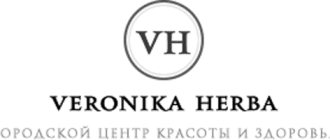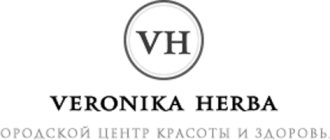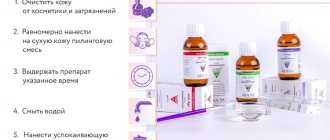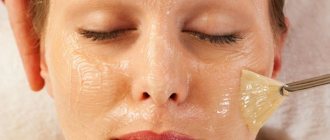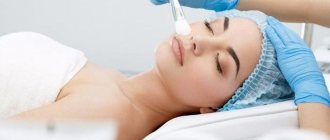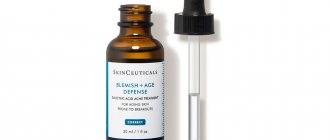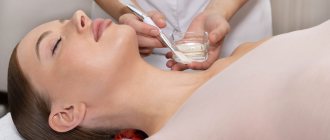From this article you will learn:
- Features of the facial peeling procedure
- Types of peelings for facial skin
- Chemical peeling for face
- Mechanical facial peeling
- Ultrasonic facial peeling
- Laser facial peeling
- Choosing the type of facial peeling based on age and skin type
Despite the large number of types of facial peels in cosmetology, they have similar tasks. Each helps cleanse and rejuvenate the skin. Depending on the depth of penetration, the substances included in the peels remove dead cells, stimulating regeneration.
The effectiveness of the procedure is also determined by the method of exposure. Some peels mechanically remove dead skin cells, while others dissolve them chemically. We will talk about the intricacies of using various types of peelings for the face and décolleté in this article.
Features of the facial peeling procedure
Translated from English, the word “peeling” means “to wash”, “to clean”. Therefore, this event is intended to deeply cleanse the facial skin, remove sebum and impurities, and eliminate dead cells from the surface of the skin.
After exfoliation of the stratum corneum, a renewed, fresh layer of epidermis appears. Young skin better absorbs oxygen and moisture, which normalizes metabolic processes, increases resistance to external negative factors, and improves cell nutrition.
There is an opinion that peeling is just a rejuvenating procedure. However, there are different types of facial peels that have their own characteristics. The basis for its implementation depends on the specifics of a particular procedure. General indications include:
- sagging and sagging skin;
- excessive pigmentation;
- the presence of a thick keratinized upper layer of the epidermis;
- consequences of acne.
Thanks to cleansing, age-related changes become less pronounced. Skin regeneration helps reduce deep or expression wrinkles. Peeling allows you to restore the structure of the skin layer, eliminating defects (microscars, age spots, various scars). In addition, during the procedure, the sebaceous glands and pores are cleansed, it serves as a prevention of inflammatory processes and acne.
Cleaning is not contraindicated for any skin type (dry, normal, oily).
Peeling is a fairly traumatic procedure, so it has a number of limitations:
- overly sensitive skin;
- presence of damage (wounds and abrasions on the face);
- age less than 18 years;
- acute stage of acne or herpes infection;
- pregnancy, lactation;
- tendency to allergies.
Peeling allows you to eliminate various defects and helps maintain healthy, fresh skin. The necessary conditions are the supervision of a professional and the implementation of all recommendations.
Etiology and pathogenesis
The most common cause of enlarged pores on the face is sagging skin due to aging. As the main proteins of connective tissue - collagen and elastin - degrade with age, the skin begins to sag, and the pores gradually increase in diameter and become noticeable.
Pores may expand due to excess sebum associated with increased sebum production . Sebum accumulates in the pores along with horny scales and dirt particles, causing them to swell and become visible. Often this condition is accompanied by acne. It is significantly aggravated by the abundant use of decorative cosmetics , which “clog” the pores and contribute to their expansion.
The presence of enlarged pores on the face is associated with gender : men, on average, have larger pores compared to women. However, reaching puberty, menstruation, pregnancy and hormonal fluctuations have a significant impact on the size of pores, which is why they can appear in women.
In addition to gender characteristics, enlarged skin pores are inherited . If these skin changes are present in close relatives, one should expect the appearance of a similar problem in children.
Photodamage plays a certain role in this pathology . Excess solar radiation disrupts the functioning of mitochondria, causing a decrease in their ability to capture oxygen and synthesize ATP, which inhibits cell migration and division. Ultraviolet light changes the expression of transforming growth factor β (TGF-β), which is a major regulator of the activity of matrix metalloproteinases that are involved in collagen remodeling. Ultraviolet light also stimulates the release of cytokines that suppress the immune response, disrupts the structure of elastin fibers, reduces the density of the microfibrillar network in the area of the dermal-epidermal junction, and increases the activity of proteolytic enzymes. All this leads to multiple changes in the skin and, in particular, to the appearance of enlarged pores.
One of the reasons for the appearance of enlarged pores on the skin of the face may be the frequent and repeated use of chemical peels, accompanied by an inflammatory reaction: a paradoxical phenomenon, given that peels are used to reduce enlarged pores. In this case, the aesthetic defect even has a special name - “ peeled skin ”.
Types of peelings for facial skin
An experienced specialist will help you determine which type of facial peel to choose. The effect of the procedure depends on the depth of exposure of the drugs. The cosmetologist will assess the condition of the skin, the specifics of existing problems and recommend the most suitable option.
Name and description of the main types of facial peeling:
- Superficial peeling. The procedure involves cleaning only the upper layers of the epidermis, without affecting the living layers. The process of superficial peeling removes dead cells. There are practically no contraindications to this procedure, it is painless and does not cause complications.
- Medium peeling. Involves cleaning the entire skin layer. During the session, drugs penetrate deeper into the epidermis, which has a beneficial effect on metabolic processes. Medium peeling is performed only by a professional cosmetologist. After such manipulations, the skin needs intensive restoration.
This type of facial peeling in cosmetology is intended for rejuvenation. It helps eliminate large areas of pigmentation, reduce deep wrinkles, and get rid of old spots. After the procedure, minor burns and red marks remain, so the recovery period can be 3–4 days.
- Deep peeling. Quite a complicated procedure. All manipulations are performed only in a hospital setting with mandatory pain relief. In the process, all layers of the epidermis are destroyed. Tissues begin to regenerate from the remaining fragments.
Deep peeling (laser and chemical) is an aggressive cleaning method. This procedure immediately rejuvenates by 8–10 years, due to the almost complete burning of old skin and its replacement with new one.
The most common anti-aging procedure is medium peeling.
In order to refresh the skin, superficial cleaning is performed at least 2 times a month. To eliminate defects and prevent early age-related changes, medium peeling is performed twice a year.
Indications for deep peeling must be very serious.
There are the following types of peelings for cleansing the skin:
- chemical;
- mechanical;
- ultrasonic;
- laser.
Let's look at each type in more detail.
RESULTS OF THE PROCEDURE: BEFORE AND AFTER PHOTOS
Chemical peeling gives quick, pronounced results - to evaluate them, look at the photos before and after the procedure. The effect can be immediate or delayed over time - several weeks after completing the course, active regenerative processes will continue in the epidermis. Redness and swelling occur only after deep peelings - superficial peels refresh the skin and do not impose restrictions on lifestyle; if slight redness appears, it will go away on its own after a couple of hours.
Chemical peeling for face
- Superficial peeling
The procedure is carried out using fruit alpha-hydroxy acids (glycolic, lactic, citric, grape). Under the influence of chemicals applied to the surface of the skin, the keratinized cells of the epidermis dissolve. These drugs not only cleanse and activate skin tissue. They have the following positive properties:
- moisturize;
- relieve inflammation;
- normalize the functions of the sebaceous glands;
- tighten pores;
- disinfected.
Indications for the procedure are hyperkeratosis, acne, post-acne, oily skin, enlarged pores, signs of early age-related changes (minor pigmentation, shallow wrinkles).
To get a lasting effect, at least 10–15 sessions are needed. The frequency should be once a week.
- Medium peeling
This type of chemical peeling for the face in cosmetology involves treating the skin with trichloroacetic acid (25–30%) and salicylic acid (30%). The action of these substances is to dissolve the cell layers to the depth of the papillary layer. The skin's response to chemical irritation is swelling and redness. Skin tissue is restored within 7 days, during which the dead layer of cells peels off.
Recommended articles on the topic:
- How to increase skin elasticity: vitamins, exercises, creams and salon treatments
- How to remove wrinkles on the face: the most effective methods
- Microcurrent facial therapy is a beneficial treatment for your skin
Using medium peeling, age-related changes in the skin (wrinkles, age spots, decreased tone) are eliminated. In addition, chemicals have anti-inflammatory and disinfectant effects. Medium chemical peeling is effective in the complex treatment of acne, as it normalizes the function of the sebaceous glands. Another advantage of this type of acid peeling for the face is its ability to cope with scars and stretch marks.
- Deep peeling
As a rule, this procedure involves the use of drugs that contain phenol. The substance affects the deep layers of the epidermis down to the middle layer. The effect is a significant renewal of the skin. Most often, men and women after 40 years of age undergo phenol peeling to correct pronounced age-related skin changes.
The basis for this procedure is the presence of:
- wrinkles, nasolabial and eyebrow folds, creases in the lips and eyes;
- excessive pigmentation;
- sagging, sagging skin;
- scars, scars, stretch marks;
- photoaging process.
The rehabilitation period after deep peeling lasts at least 4–6 weeks. To avoid complications, patients should strictly adhere to all medical recommendations regarding preparation for peeling and skin care after the session. At the end of the rehabilitation period, the face looks approximately 10 years younger. After one procedure, the result lasts for several years.
Contraindications to phenol peeling are severe heart and vascular diseases, liver and kidney diseases.
Home remedies for tightening pores
Salons offer a wide range of intensive pore cleaning methods, but effective peeling can also be done at home.
But the result will not be quick; several procedures will be required. It usually takes up to 2 months to restore a person’s attractive appearance. The most popular home recipes that tighten pores, giving the face a healthy and well-groomed appearance:
- If you ask what the simplest and most popular homemade facial peeling recipe is, many women will answer - soda. A tablespoon of baking soda is diluted with water to a mushy consistency. Add a drop of lavender oil (or tea tree). The product is applied to the face and rubbed in with massage movements for 5 minutes. Wash off with warm water and use vitamin cream.
- Take 3 teaspoons of oatmeal and chopped lemon zest, 1 egg white, 15 ml of squeezed lemon juice. The ingredients are mixed and applied to the face. After 20 minutes, wash off with warm water.
- Take 2 teaspoons of potato starch, 3 ripe strawberries, 1 egg white, 10 ml of olive oil. Mix the ingredients, apply to the face, rub in with massage movements, hold for 20 minutes, rinse with warm water.
Mechanical facial peeling
This type of manual peeling is considered the easiest way to cleanse the face. The procedure involves mechanical removal of the top layer of the epidermis using abrasives. The preparations used contain hard granules to quickly eliminate dead cells. Such means include:
- Scrub. Available in the form of a gel or cream with abrasive particles. The product is applied to the face, after which it is washed off along with dead cells. It is important to try not to injure the skin during the scrubbing process.
- Gommage. Designed for cellular nutrition and regeneration. The product is a rolling cream with soft abrasive particles or fruit acids that dissolve during cleaning.
- Brushing (brossage) to exfoliate the dead layer of the epidermis. To perform the procedure, you need a special hard brush with synthetic bristles. The face is covered with abrasive paste, then massaged with a brush.
- Salt peeling. The procedure is performed using products containing table or sea salt, rich in macro- and microelements.
- Coral polishing. The products used during the procedure contain coral chips and plant components.
- Film masks for removing dead cells from the skin. The product is a special silicone film that is applied to the face and then removed along with the stratum corneum.
With the help of manual mechanical cleaning, impurities are removed from the surface layer, the skin becomes fresh, and shallow wrinkles are smoothed out.
We recommend
Laser aesthetic cosmetology: the perfect technique for an ideal appearance More
In the beauty salon, specialists perform medium mechanical peeling, which includes microcrystalline dermabrasion and diamond exfoliation. Using these procedures, minor scars, scars, slight pigmentation, and post-acne are eliminated.
Preparation for the procedure
For 14 days before peeling, you should not visit the bathhouse, swimming pool, solarium or sauna, or use scrubs and gels for deep cleansing.
How does peeling work?
- First, the doctor removes makeup and degreases the skin with a special lotion or tonic.
- Then apply salicylic acid to the prepared skin. The exposure time is several minutes.
- The doctor neutralizes the acid with alkali or simply washes it off with water.
- A nourishing soothing mask or cream is applied to the skin.
Ultrasonic facial peeling
This type of peeling refers to hardware procedures for surface cleaning, which involves removing dead cells and cleansing contaminated pores.
Reasons for the formation of enlarged pores
On the surface of the skin there are many tiny ducts of the sebaceous glands - pores. Their main function is to remove sebum, which prevents a decrease in the moisture content of the epidermis and protects the skin from external factors. During normal operation of the sebaceous glands, the pores are practically invisible. But if their increased secretion is observed, then the ducts expand and significantly increase in size.
Enlarged pores are one of the most common problems for oily and combination skin types. Visually, they resemble small depressions that significantly worsen the appearance of the cheeks, chin, nose, and forehead.
Wide pores quickly become dirty. During the day, dust, dirt, cosmetic residues, and dead cells accumulate inside them. In clogged pores, the outflow of sebum is disrupted, which soon leads to the formation of comedones, inflamed pimples, and milia.
The main reason for the formation of enlarged pores is associated with a hereditary predisposition. A number of other factors also contribute to this cosmetic problem:
- hormonal disbalance;
- systematic stressful situations;
- unhealthy diet (predominance of fatty, spicy, salty foods in the diet);
- consumption of alcoholic beverages;
- disruption of the gastrointestinal tract;
- using expired cosmetics.
Laser facial peeling
This type of peeling involves exposing the epidermis to a laser beam. Depending on the type of radiation, as well as the depth of laser penetration, one or another result is achieved.
Contraindications to this type of facial peeling in cosmetology for problem skin:
- oncological diseases;
- cardiovascular diseases;
- infections;
- pregnancy;
- impaired blood clotting;
- presence of fillers in the treated area;
- connective tissue diseases, autoimmune diseases.
Peeling helps in solving a variety of aesthetic problems. To achieve maximum effect, you need to focus on your skin type. In addition, it is important to strictly adhere to the technology of performing the procedure.
How the procedure works in our clinic
Each cosmetic technique is prescribed based on the results of computer diagnostics of the patient’s skin. This approach allows you to accurately select the most suitable procedure for the patient. Based on the diagnostic data obtained, the cosmetologist draws up a personal program to restore the condition of the skin and narrow enlarged pores.
Before performing injection techniques, local anesthesia is first performed. Due to this, the procedure is painless and comfortable.
Choosing the type of facial peeling based on age and skin type
When choosing the type of superficial (or other) facial peeling in cosmetology, it is customary to take into account two important factors: the age of the client and the specifics of the problem.
Depending on the degree of skin aging, the optimal type of cleansing is selected:
- 21–25 years old. At this age there are no significant changes yet. Only pigmentation may appear. Experts recommend gommage or scrubbing, enzyme cleansing, and peeling using fruit acids.
- 25–35 years old. This period is characterized by the appearance of facial wrinkles, keratosis, and age spots. Cosmetologists recommend cryopilling, laser or superficial chemical peeling.
- 35–50 years old. At this age, changes in the condition of the skin become clearly visible: dull complexion, pronounced pigmentation, capillary network. Laser cleaning and vacuum peeling are recommended.
- More than 50 years. This period is characterized by the presence of many wrinkles and creases of varying depths. After 50 years, the skin needs deep chemical peeling and laser cleaning.
For mature facial skin after 40 years, cosmetologists recommend dermabrasion, mid-level professional laser or ultrasonic peeling.
- For oily skin, diamond peeling, coral mechanical or dry cleansing is suitable.
- For problem skin, salicylic or almond peels are performed.
Cosmetologists consider peelings to be an effective remedy that helps maintain skin health and renew it. Thanks to the procedure, skin tissue rejuvenation occurs quickly, skin tone increases, wrinkles are smoothed out.
If you perform peelings regularly, there will be no need for plastic surgery to restore and rejuvenate the skin.
The downside of these procedures is the risk of complications in the form of intense pigmentation, spider veins, and tissue scarring in the area of severely damaged or burned skin.
To avoid unforeseen consequences during cleansing or restoration, you need to contact trusted beauty salons. In addition, it is necessary to choose only high-quality drugs.
Why clients choose Veronika Herba Beauty and Health Center:
- This is a beauty center where you can take care of yourself at a reasonable cost, while your face and/or body will be treated not by an ordinary cosmetologist, but by one of the best cosmetologists in Moscow. This is a completely different, higher level of service!
- You can receive qualified help at any time convenient for you. The beauty center is open from 9:00 to 21:00, seven days a week. The main thing is to agree with your doctor in advance on the date and time of your appointment.
Sign up for a consultation with a specialist by phone +7 (495) 085-15-13
, and you will see for yourself!
When is this procedure needed?
We recommend booking a salicylic peel in the following cases:
- You have very oily or breakout-prone skin, and regular products won't help.
- You are tormented by acne and its consequences.
- The skin has lost its former elasticity, become flabby, folds and wrinkles have formed.
- You want to get rid of freckles or age spots.
The best time for peeling is autumn and winter. There is very little sun during this period, and your skin will be in less danger than in summer. In addition, peeling will be an excellent prevention of unwanted pigmentation.
Microcurrent facial therapy
The procedure is recommended for the following problems:
- pale, sallow complexion;
- swelling and bags under the eyes;
- fine and deep wrinkles;
- loss of elasticity and sagging of the face due to age-related changes or sudden weight loss;
- oily seborrhea and rosacea;
- the appearance of pigment spots from hormonal imbalance or prolonged exposure to the sun.
Microcurrent therapy procedures are carried out to slow down the aging process of facial skin, prevent stagnation and swelling.
Radio wave face lifting
Radio wave face lifting radically solves the problem of skin aging. The VERDI beauty salon in Rostov-on-Don invites you to a radio wave facial lifting procedure using modern Italian REVITAL RF equipment.
As a result of radio wave lifting:
- facial wrinkles and nasolabial folds are smoothed out;
- crow's feet disappear;
- rosacea goes away;
- hyperpigmentation decreases;
- the facial contour is tightened;
- the double chin is removed.
